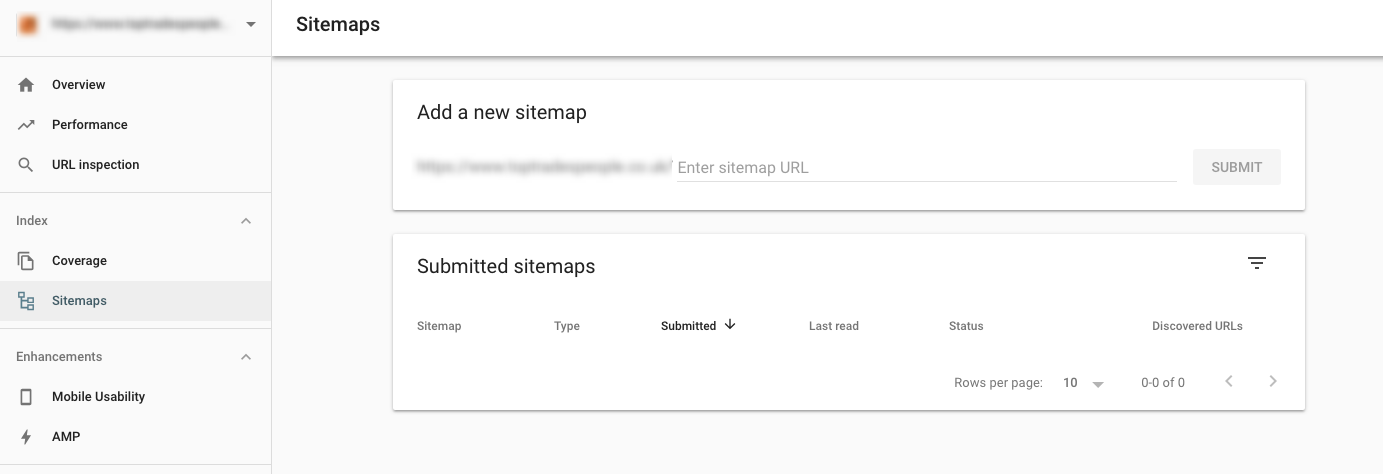Last Updated on 26th February 2024
Whilst the subject of WordPress and SEO is vast we wanted to at least get started with a few pointers to help you get off the ground with a few takeaways. We often see WordPress sites which have been built and the developers presume the site is ‘SEO-friendly’ automatically. The client often knows no different and then wonders why they are getting no traffic to their site. There are some key considerations which are foundational to SEO. Carrying out some fundamental checks and taking a few extra steps can make all the difference over time so to help you tick the basics box here are a few suggestions. We’ve also added a couple of tips around WordPress security because this is vitally important.
XML Sitemaps and WordPress
Since Google launched the Panda algorithm, it has become more critical for content publishers to confirm they are the original creators of the content on your website and to also indicate which are the most important web pages within their website to strengthen consistent signals to search engines. XML sitemaps were always important and they help search engine crawlers to find their way around the site quickly and easily. What you include in sitemaps and what you exclude is important though. If you include everything by default then you could be indicating you want to emphasise importance to pages which could cannibalise others or are thin pages.
Configure settings in WordPress for XML sitemaps with care. Think about whether you want to include all taxonomies, tags and if there are custom post types do you really want everything indexed in search engines? Probably not. You only want your best content indexed in search so go through all of the content types properly.
XML sitemaps should be at the core of your site’s technical SEO heart.
But which way to configure these for WordPress and should you always jump straight to the first option?
The good news is there are quite a few XML sitemap plugins available for WordPress. Yoast has one out of the box when you install their plugin. It’s very basic and builds separate sitemaps for different content types in addition to tags, authors, posts and pages. You’ll need to make a decision about whether to index tag pages. We generally don’t choose to index tag pages as we often find that content creators can sometimes go a bit crazy adding all kinds of tags which can lead to lots of very thin pages with only one or two post snippets on them. Not the best quality of page for someone to land on from search results. Whether these types of pages would be indexed in the first place is another matter, but as we know the download priority is reduced over time for noindexed pages it’s highly likely you’ll waste less of Googlebot‘s time on crawling these pages over time.
How to install XML sitemaps
Installing XML sitemaps is fairly easy to do. Most content management systems have automated sitemaps which means you don’t have to do anything. Surprisingly however, WordPress, the most popular CMS on the web does not offer this service.
If you have a WP system therefore, the best option is to install the Yoast SEO plugin, which gives you several other benefits as well as protecting your content.
Once you have created your sitemaps, you need to register them with search engines. It’s pretty straightforward and self-explanatory.
In Google Search Console, go to ‘ Index‘ and then ‘Sitemaps‘ and in Bing Webmaster Tools Sitemaps are under “Configure My Site.”
In Google Search Console you can then submit a sitemap (as below):

By taking this step, search engines will crawl your site to index new content whenever you submit a new post.
Updating sitemaps is worth doing. Check regularly to see what is in the sitemaps you have submitted and also check to ensure the URLs are getting indexed in Search Engine results and debug if there are discrepancies between the submitted web pages and those in the index.
WordPress Security
Have you noticed how many blogs publish content under admin? What do you make of it when you see that? It probably goes unnoticed right! That may be the case for you, but not for everyone.
There are a couple of very good reasons why publishing content is not a good idea; security and ownership.
Cybercriminals are becoming more adept at hacking into websites, and WordPress is a fairly easy target for them if you leave it exposed. You wouldn’t think it mattered, but publishing posts under Admin gives hackers a greenlight.
And here’s the bad news. If hackers hijack your WordPress site they can infect your computer and use personal details to commit various types of fraud which you can be accountable for.
Admin default
When you install a one-click hosting solution in WordPress, the username is set to Admin by default. Admin is the number one username hackers use to hijack WordPress sites.
Fortunately, you can easily change this by updating the usernames in your WP-Admin settings. Add as many users as you like and delete the Admin username.
Another reason to update usernames is accountability, particularly if you have multiple users publishing content. If your company is undertaking a content marketing strategy, you want to be able to track how posts are performing.
If everyone publishes under Admin, how do you know who published a post at a glance. Perhaps you keep a second record, but this is unnecessary and creates more admin work.
Naming authors not only allows you to keep track of writers receiving high and low engagements, but it also gives readers a name to follow. Building an online reputation is another string to your SEO bow, so label the names of your writers to give them and your company more online exposure.
Updating your user settings may seem like an innocuous task, but it is surprising how many WordPress sites are targeted by cybercriminals for this very reason. If you don’t believe me, check out this report in Forbes.
Best WordPress Themes For SEO
WordPress is a great platform for website owners that want full control over their content, without the need to code. In fact, you can code and customise until your heat’s content if you know how – which is precisely why WordPress is the most flexible CMS for millions of website owners.
Part of this flexibility is thanks to the huge range of themes created by developers around the world. You have a huge selection of themes designed for specific reasons – and a number of these are developed with SEO in mind. So let’s take a look at the best WordPress themes to build your search presence.
Schema (WordPress theme)
We’re not talking the markup library here, but as the name suggests this theme puts a large emphasis on Schema markup and SEO. With pre-configured rich snippets you can boost your click through rate on search pages, while this themes is the fastest SEO theme out there.
Key features:
• Ultra fast and SEO ready
• Rich snippets
• Fully responsive
• HTML5 & CSS3 ready
Eleven40 Pro
Built on the Genesis Framework this SEO friendly theme is fully responsive to rank well and work across all devices. A key themes with these optimised themes is clean code to make sure your site stays as quick as possible and this is one of the tidiest themes you will come across.
Key features:
• SEO optimised
• Mobile responsive
• High speed – loads within a second
• HTML5 markup
NewsTimes
NewsTimes is another optimised, lightening fast theme – this time from the guys over at MyThemeShop. Designed for news and review websites, NewsTime comes with a built-in review system – ideal for tech review sites – and you’re looking at another fully responsive theme for every screen size.
Key features:
• SEO optimised
• Built-in review system
• Schema tag integration
• HTML5 & CSS3 built
• “Blazing fast”
Thesis
Thesis is a popular theme for business owners, freelancers and bloggers around the world. With built-in SEO features; drag and drop customisation and advanced layout features, this theme gives you a powerful mix of accuracy and control over your optimised content.
Key features:
• SEO optimised
• Responsive design
• In-built SEO features
• Drag and drop customisation
Pixeldom
ThemeBounce offers up this optimised theme with a clean design and perfect on-site structure. Simple, yet responsive design means your website will be quick on all devices and its built using the latest HTML5 and CSS3 code. Pixeldom also comes AdSense ready to help you boost your online advertising efforts and, of course, it’s another SEO friendly theme.
Key features:
• SEO friendly
• Responsive design
• HTML & CSS3
• AdSense ready
Don’t forget about the plugins
One of the other key elements of WordPress is the huge range of plugins to add more advanced features to your website. There are a number of SEO plugins to help you boost your search performance and the Yoast plugin is highly recommended. While you can add social media, eCommerce and a whole range of other plugins to get more from your online performance. Just go easy on them as too many plugins will slow down your site.
Need help with SEO?
Bertey are a boutique digital marketing agency with a love for organic search (and in particular technical SEO services of which we are experts). We don’t dilute our efforts by working with a large number of clients, and provide a granular service with attention to detail. If you have experienced problems with SEO on your site, get in touch and we will take a look with a view to providing you with an initial mini SEO audit free of charge.


